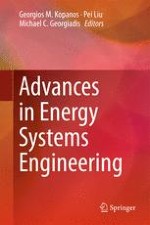2017 | OriginalPaper | Buchkapitel
5. Data-Based Model Reduction for Refinery-Wide Optimization
verfasst von : Taoufiq Gueddar, Vivek Dua
Erschienen in: Advances in Energy Systems Engineering
Aktivieren Sie unsere intelligente Suche, um passende Fachinhalte oder Patente zu finden.
Wählen Sie Textabschnitte aus um mit Künstlicher Intelligenz passenden Patente zu finden. powered by
Markieren Sie Textabschnitte, um KI-gestützt weitere passende Inhalte zu finden. powered by
